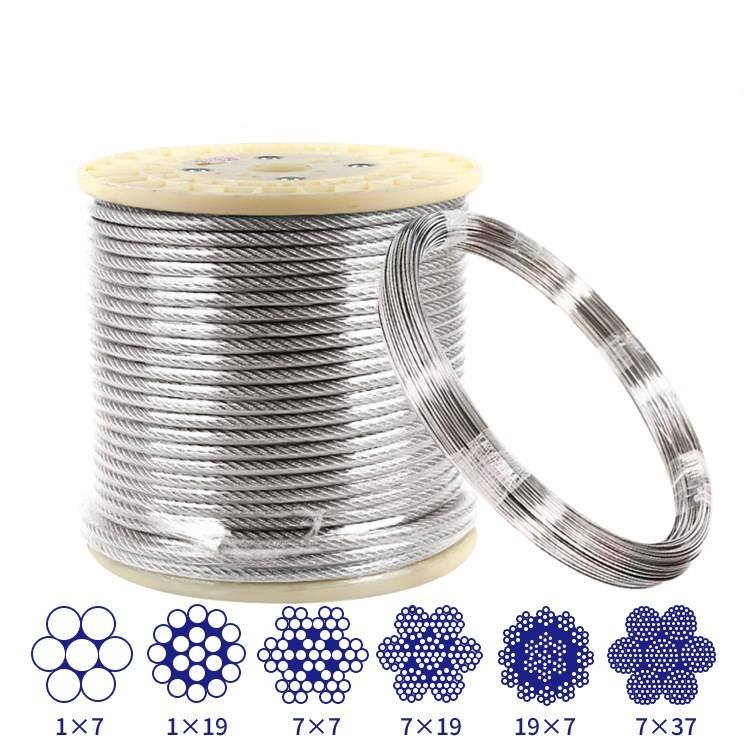Wire ropes are intricate mechanical contrivances that play a pivotal role in the realms of object manipulation, loading, and offering indispensable support to the rigging and lifting industries. Their multifaceted nature renders them indispensable for facilitating the movement of objects from one location to another with remarkable efficiency. Wire ropes consist of an amalgamation of moving components, all of which contribute harmoniously to the functioning of this intricate apparatus.
The modus operandi of wire ropes entails their connection to a crane or hoist, often equipped with swivels, shackles, or hooks at their extremities to enable controlled loading and movement. These versatile applications encompass the lifting and lowering of elevators, as well as the suspension of towering structures like bridges and towers.
A closer examination of wire ropes unveils their fundamental components, such as the steel or fiber core, which may also be complemented by lubrication. These wires, fashioned from various metals, coalesce to form individual strands that collectively comprise the rope's structure. The choice of materials, be it stainless steel or galvanized wire ropes, introduces distinct characteristics and advantages into the equation. Galvanized steel wires, for instance, find their niche in the electrical industry, serving as stay wires. Moreover, the selection of different strands, each tailored to exhibit specific properties related to abrasion resistance and breaking load capacity, allows for a versatile range of applications.
Stainless steel wire ropes, heralded for their exceptional attributes, deserve special attention. Crafted by incorporating chromium into molten steel, they emerge as champions in the battle against rust and damage caused by water, including the corrosive effects of saltwater. Stainless steel's prowess in marine environments is a testament to its remarkable properties. This alloy, comprising primarily iron and a modest 10.5% chromium content, forms a thin oxide layer on its surface, aptly named the passive layer. This defensive shield safeguards against surface corrosion, making it a prime choice for hostile environmental conditions.

In addition to chromium, stainless steel incorporates a blend of carbon, silicon, nickel, molybdenum, and manganese in varying concentrations. This diverse composition bequeaths stainless steel with a gamut of advantageous properties, encompassing heightened corrosion resistance and improved formability. Notably, stainless steel wire ropes stand out for their unrivaled resilience to corrosion in saltwater, surpassing their galvanized counterparts in this regard. Their enduring luster and imperviousness to dulling or fading over time make them a prized choice for applications requiring long-lasting aesthetics.
Stainless steel's captivating sheen and unwavering durability have earned it a prestigious place in architectural and modern design. It graces a multitude of applications, including railings, handrails, cable balustrades, and architectural cables, where its radiant and unchanging appearance adds a touch of elegance and sophistication to various projects.


Attributes and Applications of Stainless Steel Wire Ropes
Stainless steel wire ropes offer a plethora of remarkable features and are put to use in diverse applications. Let's delve into the distinctive qualities and areas where they shine:
Superlative Corrosion Resistance: Stainless steel wire ropes stand out for their exceptional ability to resist corrosion, making them an ideal choice for environments prone to moisture and corrosive elements.
Impressive Breaking Load Capacities: These wire ropes exhibit remarkable breaking load qualities, making them dependable in tasks that demand strength and durability.
Non-Magnetic Properties: Their non-magnetic nature renders stainless steel wire ropes invaluable in sectors such as naval and aeronautical fields, where magnetic interference is a critical concern.
Versatile Marine Applications: Stainless steel wire ropes find extensive use in various marine applications, including rigging, sewage treatments, mast stays, and steering cables. Their resistance to corrosion in the harsh marine environment is particularly noteworthy.
Minimal Stretch: These wire ropes offer low stretch characteristics, ensuring stability and reliability in lifting and hoisting operations.
Aesthetic Appeal: In addition to their functional merits, stainless steel wire ropes boast a high decorative appearance, making them a preferred choice in architectural applications.
Wide Range of General Uses: These versatile ropes serve a multitude of purposes, from control cables to slings and davit ropes, making them suitable for general applications across various industries.
Architectural Enhancements: Stainless steel wire ropes find a home in architectural endeavors, enhancing the visual appeal of balustrades, decking, and guardrails with their enduring luster.
Galvanized Steel Wire Ropes
On the other end of the spectrum, we have galvanized steel wire ropes, which are manufactured through a different process. These ropes are created by immersing the wires in molten zinc, forming a robust outer layer of zinc coating. This process, known as galvanization, imparts distinct properties and benefits:
Strength and Flexibility: Galvanized wire ropes are characterized by their strength and flexibility, making them well-suited for applications that involve handling bend stresses.
Resistance to Various Stresses: These ropes exhibit resistance to crushing, abrasion, and rotation, making them suitable for a wide range of demanding tasks.
Corrosion Resistance: The outer layer of zinc provides substantial protection against corrosion, making galvanized steel wire ropes a popular choice for fasteners like screws, nails, nuts, and bolts.
Economical Option: Galvanized wire ropes are generally more cost-effective than their stainless steel counterparts, making them an attractive option for budget-conscious projects.
Impressive Breaking Strength: They offer high breaking strength, often surpassing that of stainless steel wire ropes.
Fatigue Strength: Galvanized wire ropes excel in fatigue strength, contributing to their reliability in applications that involve repeated stress.
However, it's important to note that while galvanized wire ropes offer corrosion resistance, they may not be as effective in resisting the corrosive effects of salty water when compared to stainless steel wire ropes. Additionally, galvanized wire ropes may experience increased friction due to their galvanized properties, potentially impacting wear.
Nonetheless, galvanized steel wire ropes remain ductile over time, facilitating ongoing inspection for corrosion damage and serving as a durable and economical choice for various applications.


Contact: Bonny Zhu
Phone: +8613854893387
E-mail: info@stainless-wire-rope.net
Add: Wanda plaza, Taian City, Shandong Province,China